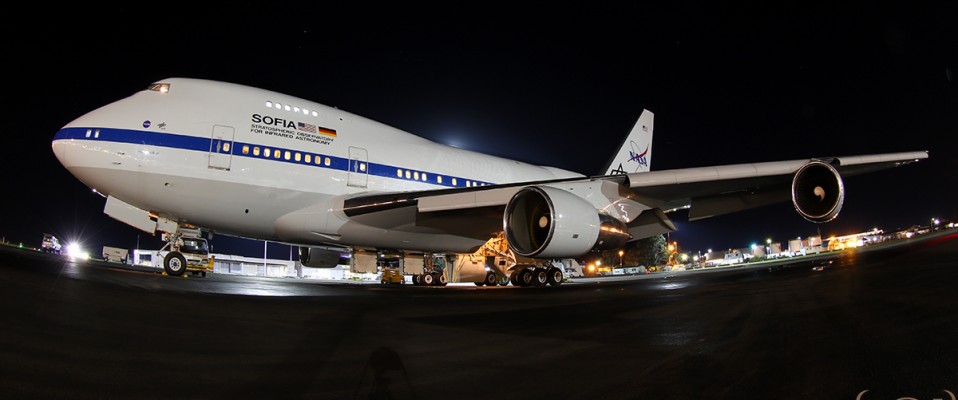NASA SOFIA: The Ultimate Eye in the Sky
Report, Photos and Video by Tim Bowrey
July 24, 2016
National Aeronautics and Space Administration’s (NASA) SOFIA (which stands for Stratospheric Observatory for Infrared Astronomy) observatory and team were back in New Zealand operating from Christchurch International Airport in June and July 2016. This is the third trip to New Zealand’s south island with the first deployment occurring in 2013, followed by 2015. The flying observatory operates from Christchurch as they chase the dry and dark skies of the southern hemisphere during the winter months.
- An instrument onboard SOFIA detected atomic oxygen in the atmosphere of Mars for the first time since the last observation 40 years ago.
- Observations made SOFIA indicate that nova eruptions create elements that can form rocky planets, much like Earth.
- As Pluto passed in front of a distant star, it cast a faint shadow on Earth. SOFIA flew into that shadow SOFIA was able to study the dwarf planet and its atmosphere.
- SOFIA made the first detection of water vapor in gas ejecting from a newly forming star.
- A team using SOFIA discovered that supernovae can produce a substantial amount of the material from which planets, like Earth, can form.
- SOFIA observed a planet outside of our solar system (an exoplanet) as it passed in front of a star. This type of mini-eclipse is called a “transit.” Transits are difficult to observe, but these findings indicate that SOFIA can measure the sizes of transiting giant planets with remarkable accuracy.
Source: NASA.gov
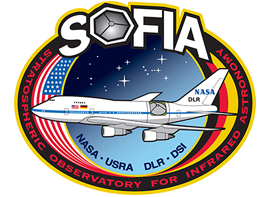
SOFIA is a Boeing 747SP aircraft housing a 2.5-meter gyrostabilized telescope designed to make sensitive measurements of a wide range of astronomical objects at wave lengths from 0.3 microns to 1600 microns. This observatory is a key element in scientist’s and NASA’s research portfolio for chemical and dynamical studies of warm material in the universe, and for observations of deeply embedded sources and transient events.
The NASA team, in conjunction with the German Aerospace Centre (DLR), brought their famous and illusive Boeing 747SP-21 down from their home base at NASA Armstrong Research Centre in Palmdale, California transiting via Honolulu in search of clear dark skies for their scientific expeditions. The iconic Boeing SP derivative of the 747 line of aircraft was delivered on the 6th of May of 1977 to Pan American as N536PA. Christened “Clipper Lindbergh”, it continues to wear the name today, honouring Charles Lindbergh’s solo flight across the Atlantic Ocean. It was later sold to United Airlines in 1986 until 1997, when it was picked up by NASA for use as an experimental aircraft.
After being grounded for almost 10 years, SOFIA now takes to the skies again after a heavy and noticeable modification into the aircraft that we see and recognize today. Due to the low amount of cycles, the aircraft is much younger than the delivery date would suggest. The SOFIA team believe it will be able to remain an active airborne observatory for another 15-20 years, therefore will almost certainly make it the last operating Boeing 747SP when it approaches retirement. As of today, it is 1 of 9 serviceable aircraft of its type out of the 45 built.
SOFIA operates from Christchurch for access to the southern skies, enabling the observatory to study celestial objects that can’t be seen from the northern hemisphere. In addition, the flying observatory is able to use the National Science Foundation’s U.S. Antarctic Program base at the Christchurch International Airport during the winter months as very few flights to Antarctica are conducted this time of year.
From SOFIA’s point of view, there is a minimization in time utilizing the airports facilities. During the evening and in winter it’s an airport that has much less traffic than most other international airports. In addition, the airspace in and around Christchurch is quiet, giving the crew many options regarding the timing of when they would like to conduct their missions.
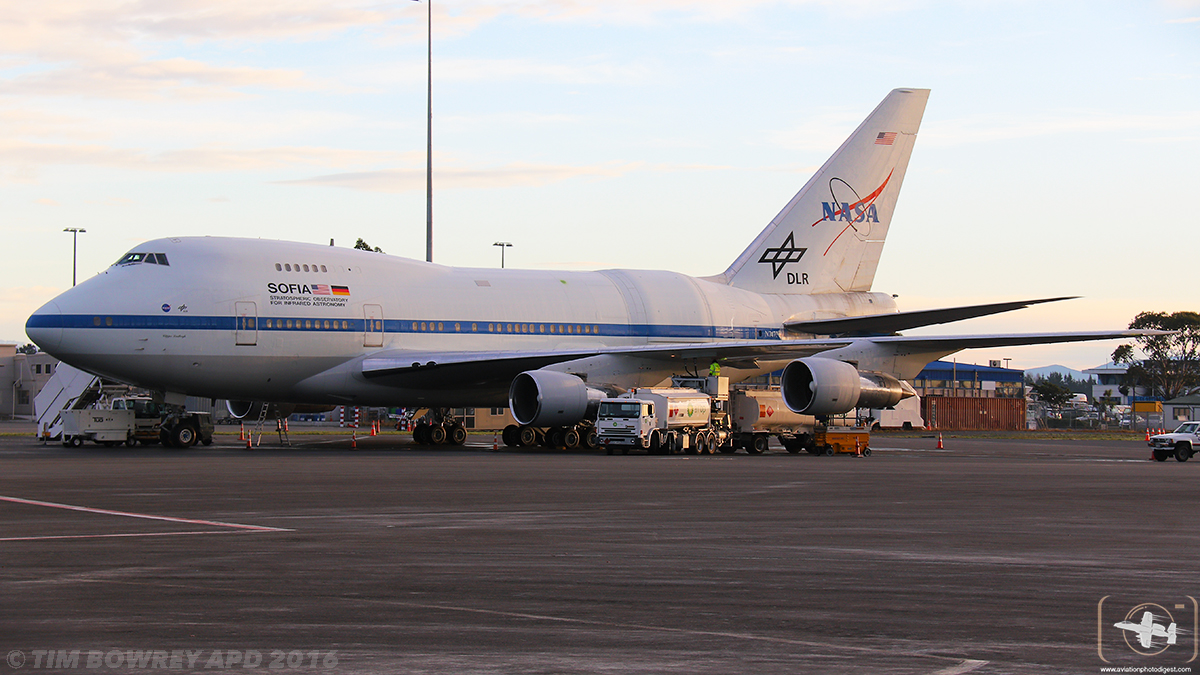
For this deployment 100 team members, from the scientists to the ground and flight crew, deployed to Christchurch for two months, with flying to be conducted three to four nights per week. There are four flight crews that split the deployment with two working the first month followed by the second set. Crews fly missions every other night.
The main mission of the SOFIA team is to fly at altitudes between 39,000 and 45,000 feet (12-14km) to observe star and planet formation, organic compounds in space, the black hole at the center of the Milky Way Galaxy, atmospheres, ring, and moons in the outer solar system, as well as comets and near-Earth asteroids. Flying at these heights give SOFIA’s scientific team a view from above more than 99 percent of Earth’s atmospheric water vapour, thereby opening windows to the universe not available from the ground.
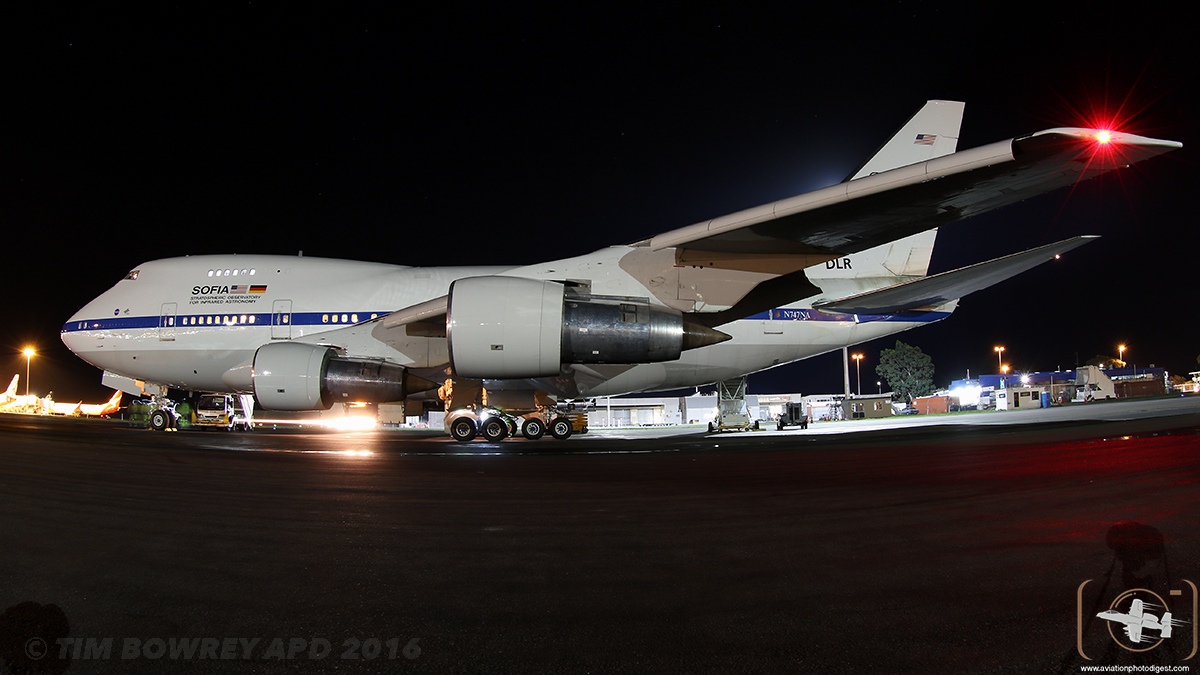
The observatory can operate from airbases worldwide on short notice to respond to new discoveries in both the northern and southern hemispheres. SOFIA has the flexibility to respond to events such as supernova and nova explosions, cometary impacts, comet apparitions, eclipses, occultations, near-Earth objects, activity in active galactic nuclei, and activity in luminous variable stars. In short it’s a valuable piece of equipment that gives scientists the ability to peer into things that they have never seen before. Especially in finding out about how the universe works, how the Milky Way and our Earth correlate to that information, and how it fits in the broader scale that is the universe.
Flying the SP
On deployment in Christchurch on 3rd July 2016, APD was invited by NASA and the SOFIA team to fly on board the observatory thus highlighting their role and watch on as they explain the importance of the mission. During the hours leading up to the flight there is a lot of work for all of the crew on the ground and for those that will be partaking in the flight that evening. As a part of the team for that evening, APD prepared to take-off into the night sky for our 9 hour and 44 minute mission at a cruising speed of Mach 0.85, which is around nine miles a minute.
For this to be achieved the crew meets in the briefing room about two hours before departure. The SOFIA team are utilizing the National Science Foundation’s U.S. Antarctic Program facilities at Christchurch Airport. This base is usually used by the USAF in the summer months for Antarctic missions conducted by various C-17 units and LC-130Js from the 109th Air Mobility Squadron.
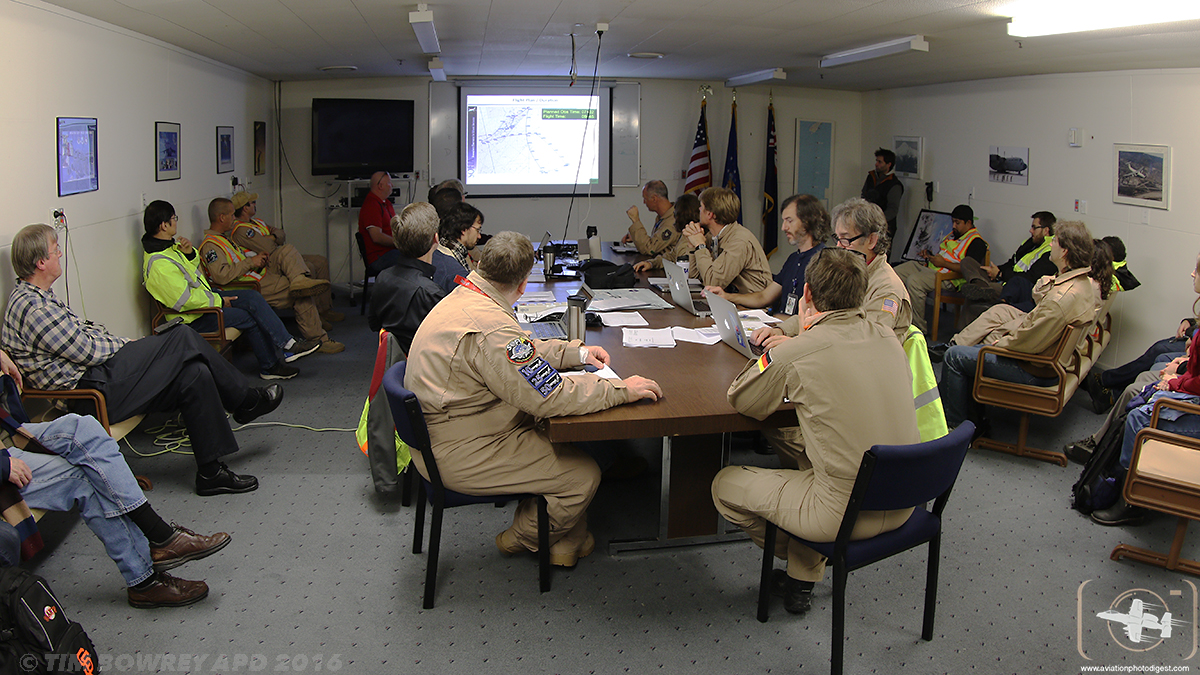
APD spoke to Bill Wholer who is the ‘SSISIL’ (Sofia Science Instrument Software Interface Lead). His duties onboard SOFIA are to ensure the software he designed for SOFIA doesn’t malfunction or have any errors so the telescope and computers run normally during the flight. He is also the designer of the computer programs for the telescope and ensures there are no errors or malfunctions to the science stations or computers during each mission.
Wholer fills us in on what usually happens in the briefing before flight: “During the briefing a checklist is read out to confirm everyone’s attendance and what their role is for the mission. Weather and visibility from the meteorology team is displayed as well as the flight plan to ensure time is used most effectively for science work. Particular teams will clarify the serviceability of all aspects of the aircraft including computer systems, safety equipment, avionics and, on a very detailed level, the telescope itself.”
After all the formalities are complete in a very professional and efficient manner, the team heads out to the tarmac to board the aircraft. Another safety briefing takes place after the cabin door is closed. The start-up procedure is in some ways, very different to a normal passenger flight. The flight crew will allow extra time in case any technical issues should arise before taxi so the planned take-off time of 1722LT (17 minutes after sunset) is achieved and the mission is not delayed. We begin our taxi during dusk, allowing an aircraft to land before departing Runway 02 Right on schedule and depart initially straight ahead in a northerly direction.
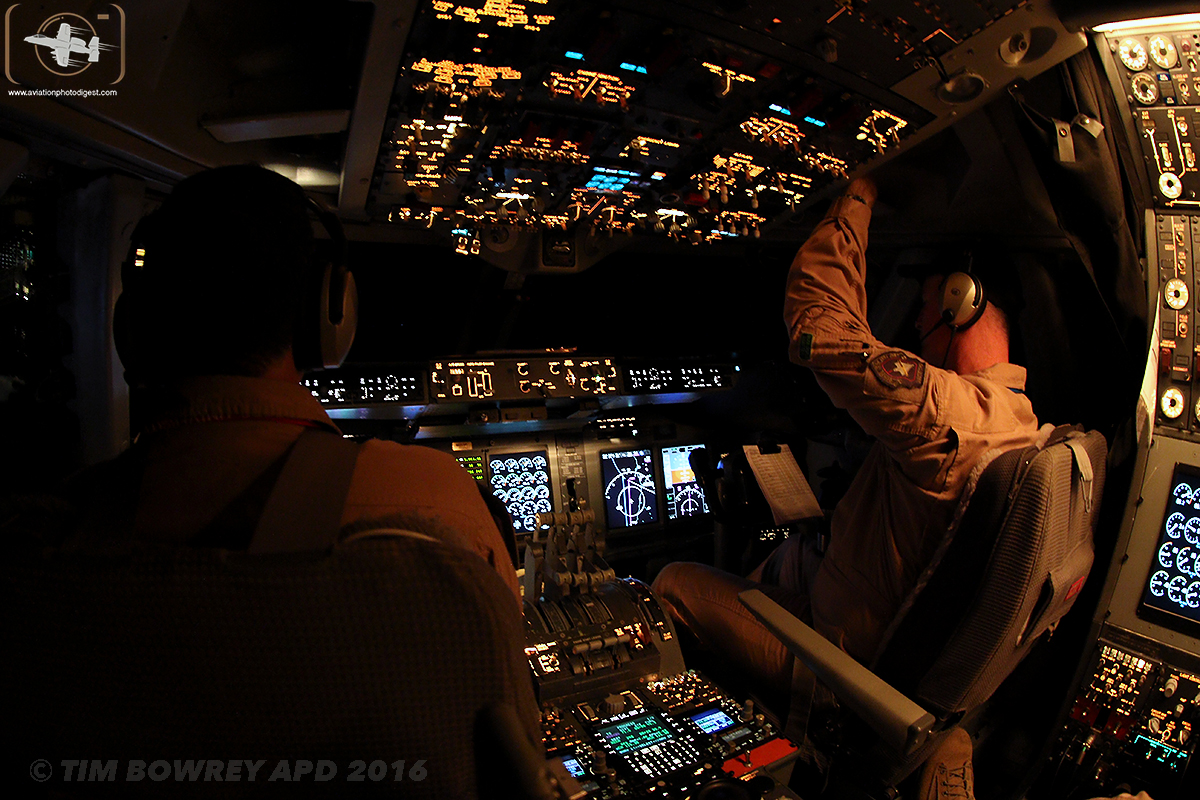
Around 30 minutes after take-off, not a minute is wasted and the telescope is opened by the Mission Director on the main cabin in conjunction with the Flight Engineer, Martin “Moose” Pier, upstairs in the cockpit. The device known as the Cavity Door Drive System, or CDDS is activated and in a matter of seconds, we are ready for observing. Generally speaking for a 9 to 10 hour flight time, more than 7 hours are spent observing the skies and logging research data. For our flight of 9 hours and 44 minutes, 7 hours and 7 minutes were allocated for observation time, which shows the efficiency of each flight plan.
The Eye
The telescope itself is designed by a group of leading German aerospace companies, MAN Technologic AG and Kayser-Threde GmbH. It has as incredible diameter of 2.5 meters and takes the title as the world’s largest and most sensitive airborne observatory. Enabling this to happen SOFIA is designed to fly above the atmosphere to avoid the
water vapour that usually obscures ground-based telescopes.
Due to the weight of the telescope sitting well behind the main landing gear, you may think it will throw the weight and balance of the aircraft out. However, this is not the case. Particularly for take-off, the aircraft is just below maximum take-off weight (MTOW) due to the large amount of fuel on board and unknown to the naked eye, there are also large metal plates loaded into the forward cargo hold to alleviate any unbalance of the aircraft. Depending on the flight time, this ballast can be added or removed to suit the mission.
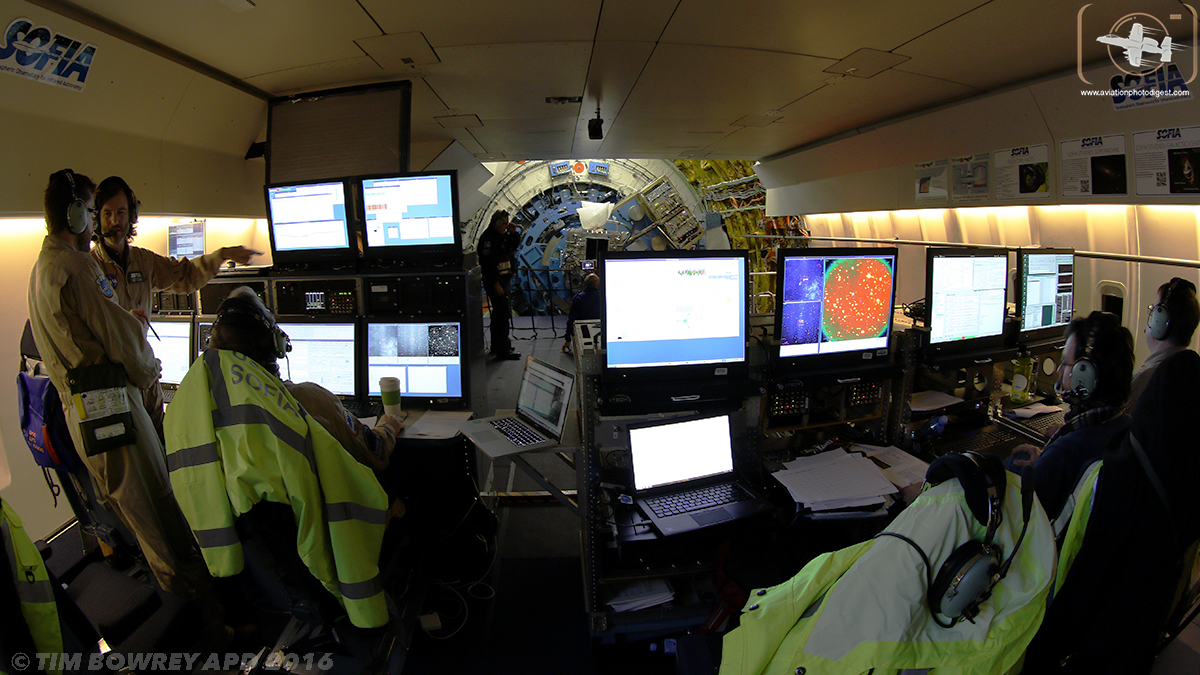
The opening of the telescope door brings the disruption of airflow into question. Again, fantastic engineering by the team has made this un-noticeable to all passengers and crew on board. Small lips on either side of the door redirect airflow straight over the open face of the telescope cavity creating next to zero drag or turbulence which along with the pneumatic stabilizer holding the telescope gives scientists a perfectly steady infrared image.
Wohler said, “Apart from this state of the art telescope utilized onboard, sophisticated computer stations are provided for the crew. Also the crew use station-to-station headsets for communications during flight and discussion between each team is via separate channels. This allows communication between the different groups of scientists,
telescope operators, software technicians, and flight crew to ensure time is effectively used, and that operations are made as easy as possible. On top of that the aircraft cabin is kept at quite a cold temperature ensuring that the team’s computers do not overheat. Everything is maximized so we can utilise every valuable minute we have onboard for each mission.”
Flight Crew and the Clipper Lindbergh
The flight crew who were navigating our Boeing 747SP through the dark skies of the Southern Hemisphere were pilot Manny Antimisiaris, Troy Asher, and Flight Engineer “Moose” Pier. To any aviation enthusiast’s interest in the rich history of SOFIA’s flight crew, each had a thoroughly interesting career in flying. Antimisiaris, who was sitting in the pilot’s seat, has been flying since the mid 1980s. He has flown some military time and is a combat veteran, however, most of his civil flying was light aircraft in his early career as well as King Airs then Southern Air 747-200 freighters, American Airlines 737-800s in his later years before flying NASA’s sole 747SP. Troy Asher has also had an impressive military career spanning more than 20 years flying both B-1 Lancer and B-2 Spirit strategic bombers, among other fighter aircraft. Sitting behind, in charge of the engineering panel sits “Moose” Pier. Apart from flying with NASA, he spends part of his time flying his own ultralight aircraft near his home in Denver, Colorado. His past has seen him spending many hours on board Boeing 747 classics with both United Airlines and Evergreen.
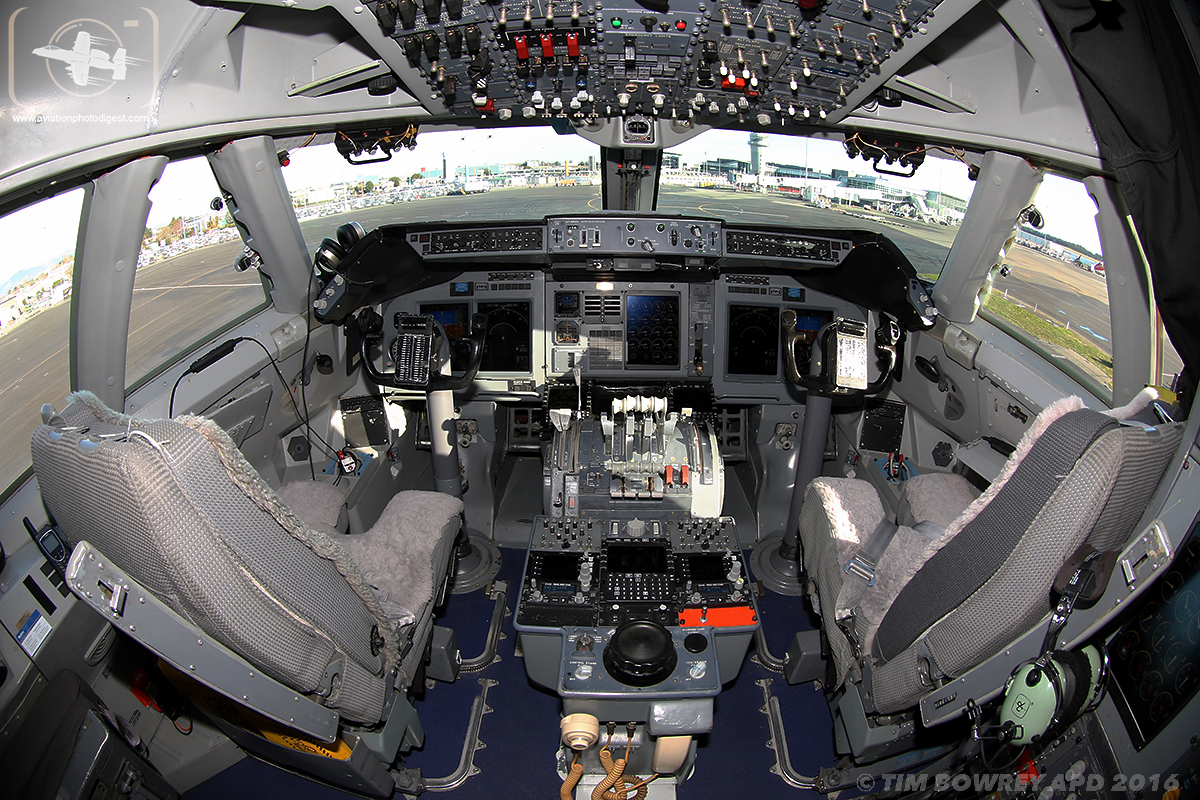
Describing the unique characteristics of SOFIA both pilots told us that it’s a privilege and a joy to fly SOFIA, describing its own uniqueness compared to other 747s. Antimisiaris said, “First, it has it’s own custom made cockpit as it was built around the idea of the roles SOFIA would undertake. It has all the bells and whistles of a normal airliner these days so it’s pretty up-to-date. The cockpit modification began in 2008 and was completed in 2010. But really it’s no different to any other SP out there, even when we have to add or subtract weight for any particular mission, it’s an aircraft that just keeps going.”
On Return to CHC
As we approached Christchurch for our landing at 3:06 a.m., the Cavity Door Drive System was activated and closed without any impact on the aircraft’s performance whatsoever.
Kindly enough, I was invited by the personable, friendly and very experienced flight crew to join them in the cockpit for landing. Under the call sign “NASA 747 Heavy,” we made a perfect approach and landing on Runway 02 right on schedule.
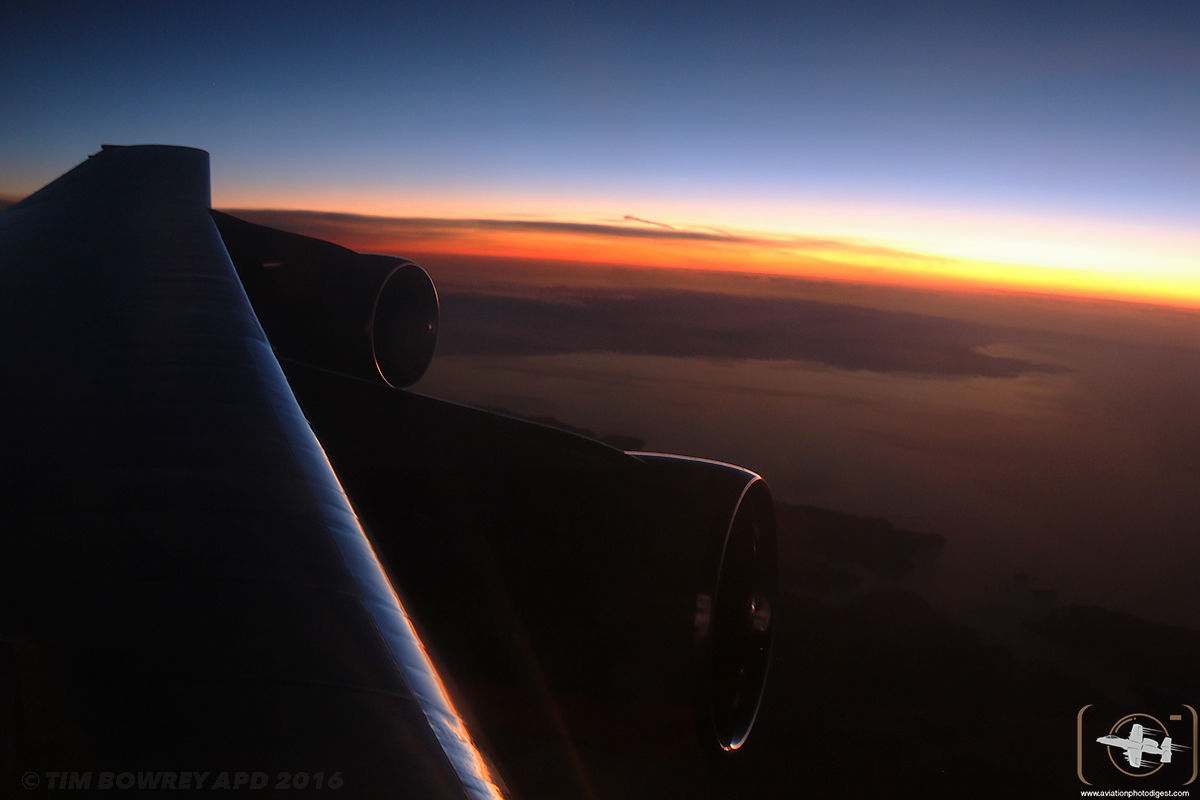
It was an amazing flight to see how the crew performs in their various locations as a proficient team, and to take in the wonder of the aircraft herself. During the flight everyone was treated to a wonderful light show as the Aurora Australis, or “Southern Lights”, danced its way across the atmosphere. Being up so high at around 43,000 feet it is an amazing office to peer out from into the late evening sky. We also witnessed a unique event where a bit of space junk smashed into the upper atmosphere and burned up in a dazzling display that all of us including the crew witnessed, a truly memorable and wonderful flight.
I cannot speak highly enough of the professional team of SOFIA, both in the air and on the ground. A project that is expected to provide astronomers from all around the world up to 100 research flights a year from both Palmdale and Christchurch, we hope to see the team and SOFIA back in the winter of 2017.
Author’s Note: APD would like to thank all flight crew and scientists from the SOFIA program for a wonderful time and especially Nicholas Veronico. Most importantly, we liked to thank and state our appreciation to NASA for their wonderful support in putting together this article.
Registration: N747NA
Manufacturer’s serial number: 21441
Line number: 306
SOFIA empty weight (zero fuel): 171,458 kg (378,000 pounds or 189 short tons) SOFIA Maximum Take Off Weight: 315,700 kg (696,000 pounds or 348 short tons) Maximum Fuel Load: 136,100 kg (300,000 pounds; 44,776 U.S. gallons)
Fuel Usage: 68,040 to 113,400 kg (150,000 to 250,000 pounds) (standard duration mission)
Range: 12,270 km (6,625 nautical miles)
Mission Duration: 9 to 10 hours (standard); 12.2 hours (maximum)
Cavity Door weight: 1,430 kg (3,150 pounds)
Powerplant: 4 x Pratt & Whitney JT9D-7J turbofan engines (50,000 lbf thrust each) Fuselage Length: 53.9 meters (177 feet) Standard 747-400: 70.5 meters (232 feet) Wingspan: 59.7 meters (196 feet)
Click on an image below to navigate through the gallery:
Tim Bowrey has been an aviation photographer for 15 years and is based in Sydney, Australia. He specializes in photography of civil aviation and flying in different types of airliners, from a Boeing 747SP, a DC-10 to an Ilyushin 18. Travelling has taken him around the world numerous times, visiting many of the world’s aviation hot-spots including: St Maarten, Seattle, Toulouse and countries like North Korea, Bangladesh and Iran.


